Intel Core i5-9400F CPU Review: Cutting On-Die Graphics For A Slightly Lower Price
Why you can trust Tom's Hardware
Conclusion
Intel’s Core i5-9400 processors represent another iterative update to the Skylake architecture, yielding minor performance improvements in certain workloads. But the company's tendency to over-segment its product families, resulting in the removal of Hyper-Threading from Core i5s and a lack of overclocking, diminishes its position against a lot of AMD's Ryzen CPUs. There is now a vulnerable spot in the middle of Intel's stack that AMD will almost certainly attempt to exploit with its Ryzen 3000 series.
At least Intel has a somewhat budget-oriented offering in the form of its F-series processors, which lack integrated graphics. Although the F-series chips officially sport the same recommended prices as Intel's fully-functional models, they're a little cheaper in practice. Saving $20 on the -9400F is a big deal when it means fending off AMD’s Ryzen 5 family armed with more threads, unlocked multipliers, and beefy stock coolers.
In the chart below, we plot gaming performance with both average frame rates and a geometric mean of the 99th percentile frame times (a good indicator of smoothness), and also plot performance vs. price in a range of productivity applications. It's worth noting that AMD's line-up is heavily discounted, while Intel's Core i5-9400F sells at a significantly lower price than the company's recommendation. As such, we’re departing from our standard practice of using official price lists. Instead, we’re using average pricing found online (temporary sales excluded). Volatility applies.
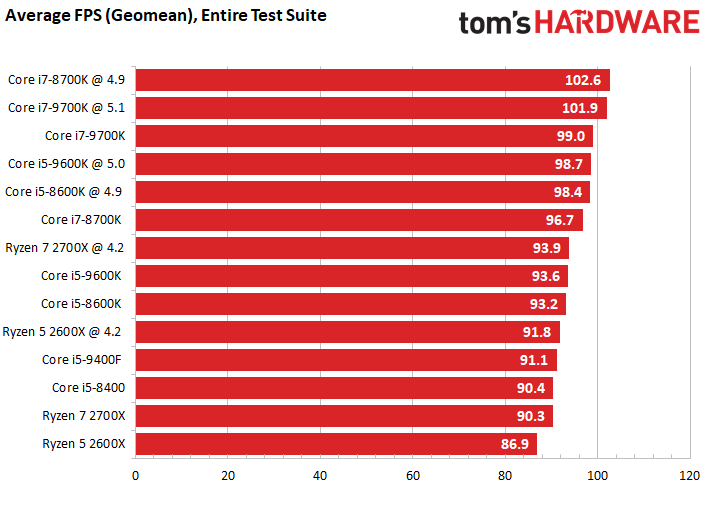
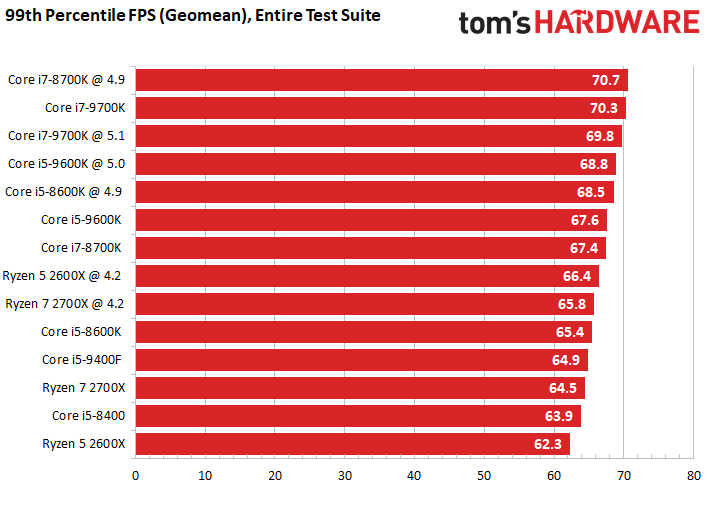
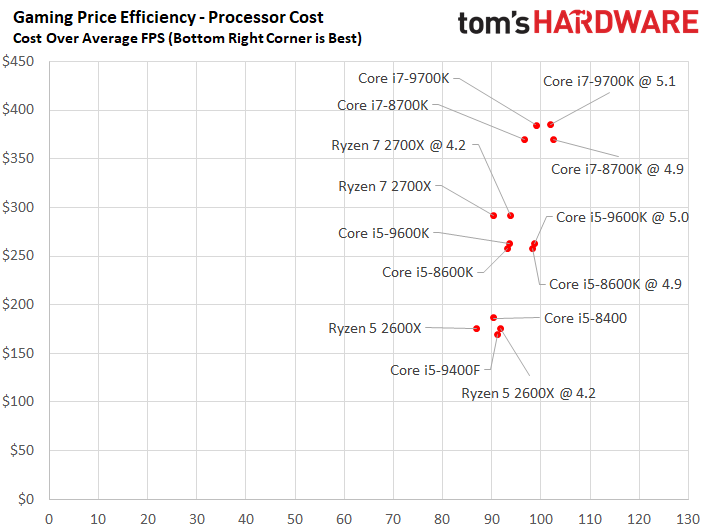
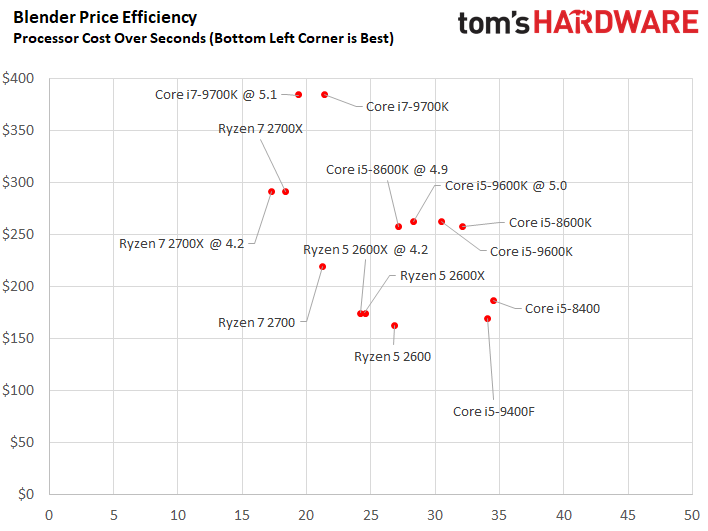
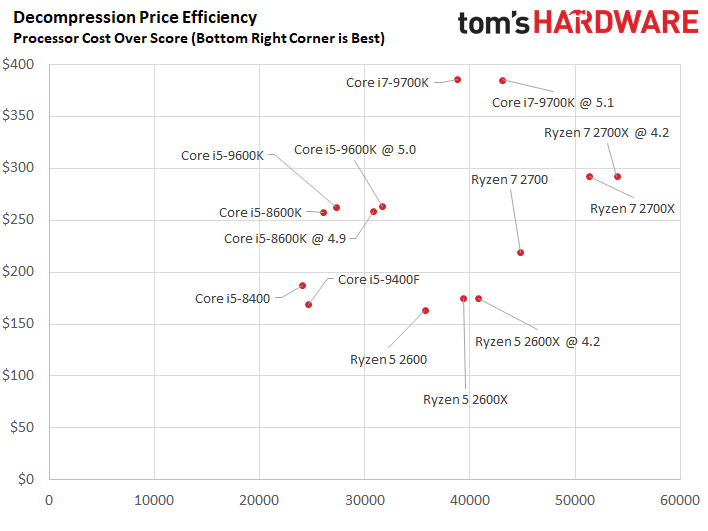
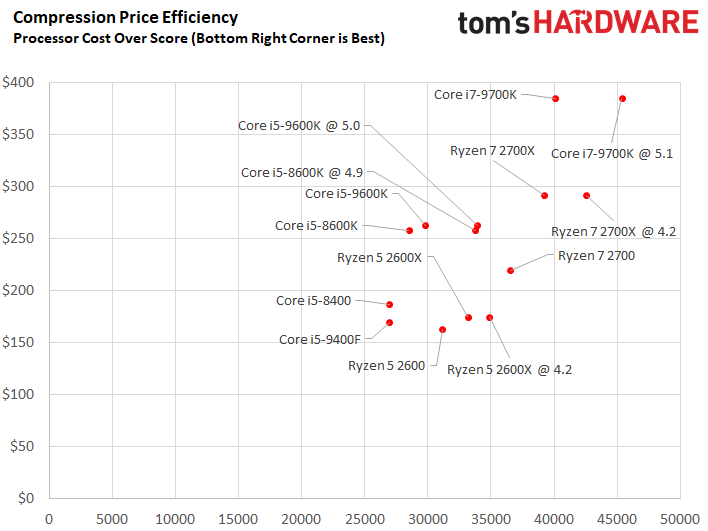
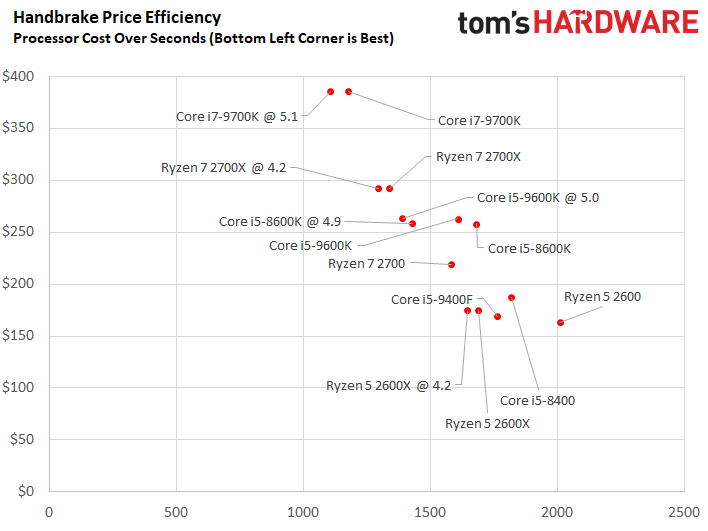
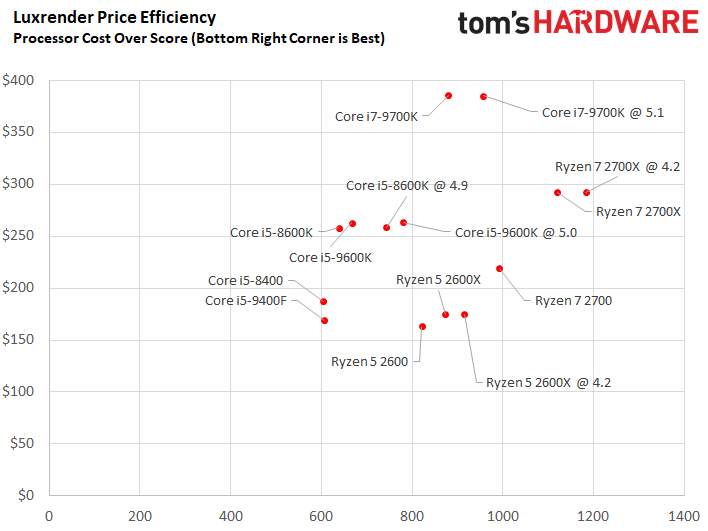
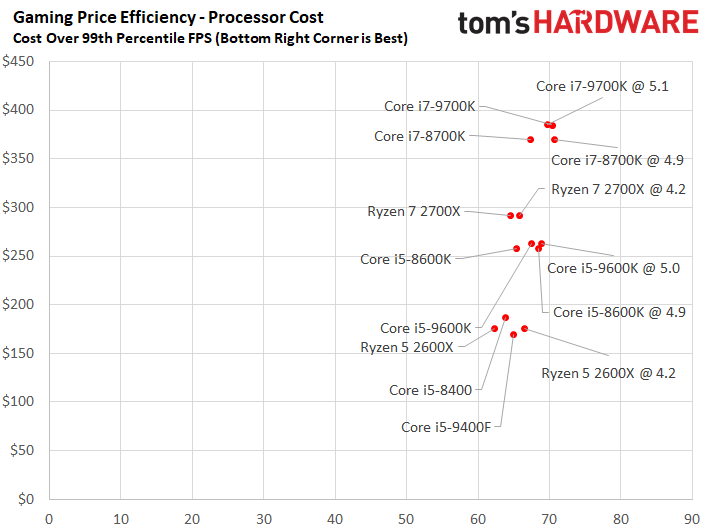
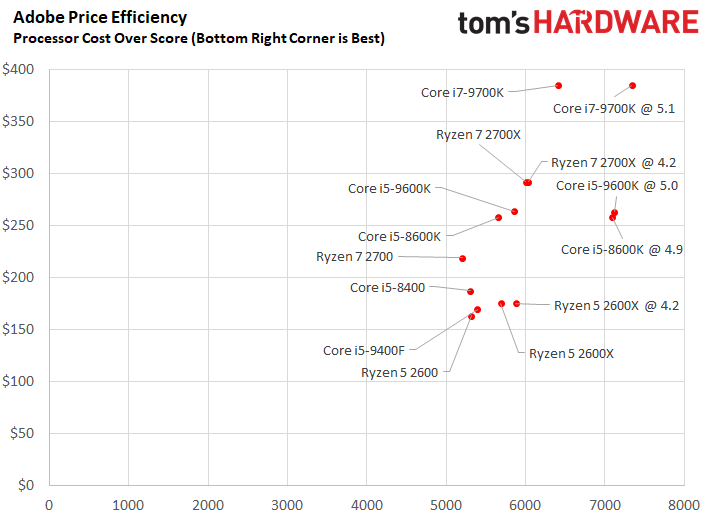
The Core i5-9400F’s 2.5%-higher clock rate offers an incredibly mundane advance over the previous-gen Core i5-8400 in games, with differences across our test suite amounting to roughly 1 FPS in both average frame rates and 99th percentile measurements. That certainly isn’t enough to warrant a generational upgrade.
Intel's real competition comes from the Ryzen 5 2600X. AMD’s 6C/12T processor retails for ~$5 more than the -9400F, but trails by 4.2 FPS (4.8%) on average. The 2600X’s unlocked multiplier is a big advantage though, and its bundled thermal solution is robust enough for overclocking. After tuning, the Ryzen overtakes Intel's Core i5-9400F, if only slightly.
Our application testing revealed a similar trend, with the -9400F serving up small boosts compared to the -8400, yet leaving room for AMD's Ryzen 5 2600X to shine even brighter. Not surprisingly, 12 threads help chew through rendering, compression, decompression, and encoding workloads. Strong threading performance also bodes well for simultaneous gaming/streaming performance.
You can drop the AMD processors into budget-minded B-series motherboards with memory overclocking support. Conversely, you have to buy a Z-series board from Intel to enable similar functionality. Given the pricing of Z-series motherboards, they simply don't make much sense alongside multiple-locked mainstream CPUs. Forward compatibility, on the other hand, is something worth thinking about, and AMD’s pledge to support Socket AM4 socket with its new Ryzen 3000 processors looms large. Picking up a Ryzen model today leaves an upgrade path open, while Intel will almost certainly move on to a new interface next generation.
Get Tom's Hardware's best news and in-depth reviews, straight to your inbox.
Aside from the -9400F’s lack of integrated graphics (which the Ryzen 5 2600X doesn’t have either), Intel's newest Core i5 still offers leading gaming performance in its price range. A $20 savings is a nice addition that helps Intel stay competitive with AMD. In spite of the -9400F’s discount, though, the Ryzen 5 2600X still gives you the best blend of pricing and performance for general productivity applications. It's quite adept at gaming workloads too, making it an excellent all-rounder. Plus, AMD’s new chips are on the horizon.
MORE: Best CPUs
MORE: Intel & AMD Processor Hierarchy
MORE: All CPUs Content

Paul Alcorn is the Editor-in-Chief for Tom's Hardware US. He also writes news and reviews on CPUs, storage, and enterprise hardware.
-
tennis2 Would like to see some testing done to determine how core count affects games these days with the "core count race" going on. It still seems like 4-6 cores is where the cutoff is before frequency is the determining factor of frame rates.Reply
Also show if/how online multiplayer changes that conclusion. -
R_1 in the comparison chart you have the 9400f having graphics and the 9400 as not having graphics.Reply -
NightHawkRMX 9400f would be a good deal if it had a higher turbo or overclocking support. Z390 boards suitable for overclocking are expensive as well.Reply
Otherwise, Ryzen 5 2600x has 6 more threads, higher turbo, overclocking support, and cheap overclocking boards than negate the slightly higher chip price.
Still waiting on Computex. -
Karadjgne I'm still wondering why there's even testing of single core performance. In the rendering test, multi-core, the Ryzens dominated Intel. Very next test was a single core performance test where as usual, Intel was stronger. Why? I can't think of any single core rendering, or games for that matter. It's kind of archaic to my mind. A multi-core test on software that that uses multiple cores makes perfect sense. It shows how well the software responds to the amount of threads. Saying an intel beats a Ryzen in single core rendering is.....Reply
(I'm not gonna use those words in polite company) -
pete_101 I see the CPU has a base frequency of 2.9 and a turbo of 4.1 GHz, but this will be a single core maximum speed. Although it's locked, it should be possible in the mobo BIOS to set all 6 cores to run at this frequency.....if you have a good enough cooler.Reply -
NightHawkRMX There should be an 8 thread Cinebench test to compare CPUs. Most games only use around 8 threads or a little more (battlefield comes to mind). An 8 thread test would be the most accurate way to test gaming CPUs.Reply -
Anubis666 It's funny how prices are different in different countries.. In one thread ,a guy says 15-20$ less than Ryzen 2600 so just go with the i5 9400f..Reply
Here in India i5 9400f is 60$ cheaper than Ryzen 2600 and 95$ cheaper than 2600X..
I'm still confused to go with i5 9400f over 2600 just for the multi thread.. As I wanted it for playing , recording Games,Edit and upload to YouTube and, probably streaming Dota 2 in near future.
The price of i5 9400f is tempting but I'm not sure it can able to do stuff I mentioned above with close to ease..
I'm sure coming Ryzen 3000 is even high price due to high demand in here.